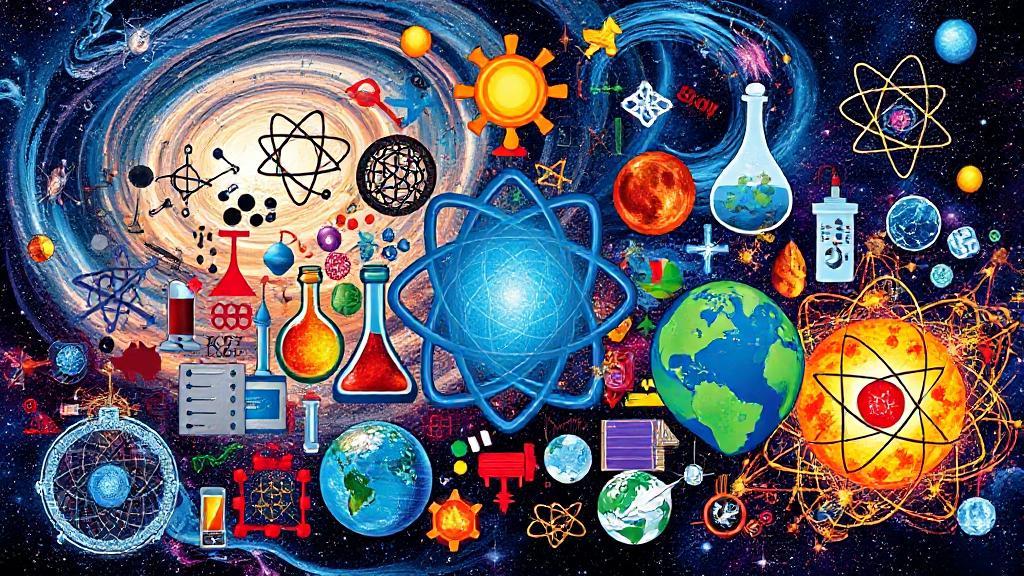Introduction to Physical Science
Physical science is a broad field that encompasses the study of non-living systems, in contrast to life sciences. It is a fundamental area that helps us understand the nature and properties of energy and matter, the laws of nature, and the physical world around us. This field is crucial for the development of technology and for understanding the universe at both the macroscopic and microscopic levels.
Major Branches of Physical Science
Physics
Physics forms the backbone of physical science, investigating fundamental forces and matter. Key areas include:
- Classical Mechanics: The study of motion and forces
- Thermodynamics: The study of heat and temperature
- Electromagnetism: The study of electric and magnetic fields
- Quantum Mechanics: The study of particles at the atomic and subatomic levels
- Relativity: Deals with space, time, and gravity relationships
For more on physics, visit Physics.org or Khan Academy's Physics Course.
Chemistry
Chemistry focuses on the composition, structure, properties, and changes of matter. It bridges the gap between physics and biology. Primary subdivisions include:
- Organic Chemistry: The study of carbon-containing compounds
- Inorganic Chemistry: The study of inorganic compounds
- Physical Chemistry: The study of physical properties of molecules
- Analytical Chemistry: The study of composition of substances
- Biochemistry
The American Chemical Society offers extensive resources on chemistry.
Astronomy
Astronomy studies celestial objects and phenomena beyond Earth's atmosphere. Major focus areas include:
- Astrophysics: The study of physical properties of celestial bodies
- Cosmology: The study of the origin and evolution of the universe
- Planetary Science: The study of planets and their systems
- Stellar Astronomy: The study of stars
- Galactic Astronomy: The study of galaxies
Visit NASA's Astronomy Page or check out NASA's astronomy picture of the day.
Earth Science
Earth science is the study of the Earth and its processes. Key areas include:
- Geology: The study of the solid Earth and its processes
- Meteorology: The study of the atmosphere and weather
- Oceanography: The study of the oceans
- Environmental Science: The study of the environment and solutions to environmental problems
The United States Geological Survey (USGS) provides valuable information on earth sciences.
Applications and Importance
Technological Applications
Physical science drives innovation in various fields:
Medical Breakthroughs
Applications in healthcare include:
| Field | Application |
|---|---|
| Imaging | MRI, CT scans, X-rays |
| Treatment | Radiation therapy |
| Diagnostics | Chemical analysis |
| Drug Development | Molecular design |
Environmental Applications
Physical science helps address environmental challenges through:
Understanding climate change mechanisms Developing clean energy solutions Creating sustainable materials Monitoring environmental conditions
Future Directions
Emerging Fields
Physical science continues to evolve with new areas of study:
- Quantum Computing
- Nanotechnology
- Materials Science
- Green Chemistry
Interdisciplinary Approaches
Modern research increasingly combines multiple disciplines:
- Biophysics
- Chemical Engineering
- Astrochemistry
- Environmental Physics
For more information about careers in physical science, visit the Bureau of Labor Statistics Science Occupations page or explore current research initiatives at the National Science Foundation website.
